THE Journal's 2007 Innovators : 3
Joseph Underwood
Miami Senior High School (FL)
 You say you're itching to learn aboutthe Galapagos Islands, but you can'tseem to fit the trip into your schedule?No worries: Gus Galapa will tellyou all you need to know. Gus' great,great-, great-, great-grandfather wasthe only man in all of Guayaquil,Ecuador, who was brave enough toventure out in his boat to a group ofunnamed islands some 650 miles offthe coast of the mainland. His namewas Gus Galapa, too—and he gavehis name to the islands.
You say you're itching to learn aboutthe Galapagos Islands, but you can'tseem to fit the trip into your schedule?No worries: Gus Galapa will tellyou all you need to know. Gus' great,great-, great-, great-grandfather wasthe only man in all of Guayaquil,Ecuador, who was brave enough toventure out in his boat to a group ofunnamed islands some 650 miles offthe coast of the mainland. His namewas Gus Galapa, too—and he gavehis name to the islands.
Well, that's how Joseph Underwoodexplains it. He's the director of Arts-Related Technology forEntertainment Careers—ARTEC—at Miami Senior HighSchool. He invented Gus to "infuse environmental, cultural,and global awareness" into students who haven't had—and maynever have—an opportunity to visit the Galapagos Islands. Gusappears in one-minute video shorts talking about giant tortoises,volcanoes, sea life, pollution, and much more.
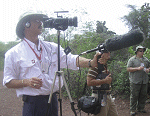 Underwood came up with the idea for Gus Galapa whileapplying for the Toyota International Teacher Program, which,in conjunction with the Institute of International Education, sends US teachers abroad to "enhance theirunderstanding of environmental issues around the world." Theprogram asks applicants to submit a plan that they will use toenhance their students' education. Underwood says he had createdcharacters in the past to use as engaging instructionaltools; he figured it was time for another: "I thought it wouldbenefit my students to learn more about the global environmentin general, and the Galapagos Islands in particular, if Icould come up with a new character."
Underwood came up with the idea for Gus Galapa whileapplying for the Toyota International Teacher Program, which,in conjunction with the Institute of International Education, sends US teachers abroad to "enhance theirunderstanding of environmental issues around the world." Theprogram asks applicants to submit a plan that they will use toenhance their students' education. Underwood says he had createdcharacters in the past to use as engaging instructionaltools; he figured it was time for another: "I thought it wouldbenefit my students to learn more about the global environmentin general, and the Galapagos Islands in particular, if Icould come up with a new character."
Underwood turned the 30 hours of footage he brought backfrom his Galapagos adventures into an 18-part educationalseries, available in both English and Spanish. In each of the 1860-second clips, Gus introduces and narrates a topic of interestconcerning the islands, and then closes out with his signaturetagline: "Thanks for watchin' and thanks for learnin'." Underwood'sstudents can use the laptops available to them in hisclassroom to research any of the subjects Gus introduces.
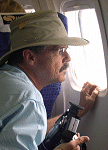 Underwood says that Gus Galapa is now educating studentsabout the Galapagos Islands in more than 20 states across theUS, as well as in Galapagos schools, and is being put to useby teachers at Miami Senior High in environmental science,biology, social studies, and English as a Second Languageclasses.
Underwood says that Gus Galapa is now educating studentsabout the Galapagos Islands in more than 20 states across theUS, as well as in Galapagos schools, and is being put to useby teachers at Miami Senior High in environmental science,biology, social studies, and English as a Second Languageclasses.
A seasoned traveler, Underwood says the opportunity to doresearch on the Galapagos Islands gave him the chance tobroaden his horizons, and to bring back that knowledge to hisstudents, to "help [them] find out more about different peoplein the world. Their world here in Miami consists of LittleHavana and Overtown, and not much else.
"Many now have dreams of visiting the Galapagos someday.The research had a tremendous effect on opening up theireyes to a world that they did not realize was out there for themto explore." Underwood hopes to bring his students to theislands to work alongside native students, and together createa video documentary of the voyage.
Stan Trevena
Modesto City Schools (CA)
and Chris Flesuras
Kyoto Gakuen High School (Japan)
 The Pacific Ocean separates high school students at ModestoCity Schools in central California from their peers at their sisterschool in Kyoto, Japan. But thanks to Stan Trevena,Modesto's director of information and technology services,and Chris Flesuras, an English teacher at Kyoto Gakuen HighSchool, and innovative teachers on both sides of the water,students who participate in a foreign exchange programbetween the two sites now build friendships over an entireyear before meeting face-to-face.
The Pacific Ocean separates high school students at ModestoCity Schools in central California from their peers at their sisterschool in Kyoto, Japan. But thanks to Stan Trevena,Modesto's director of information and technology services,and Chris Flesuras, an English teacher at Kyoto Gakuen HighSchool, and innovative teachers on both sides of the water,students who participate in a foreign exchange programbetween the two sites now build friendships over an entireyear before meeting face-to-face.
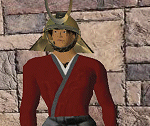 Teachers on both ends agreed that the exchange programwould be strengthened if students got to know one anotherbefore meeting in person—the Californians travel to Japaneach April, and the Japanese students visit the United Statesevery October. Videoconferencing was considered, but the 17-hour time difference made that option nearly impossible.
Teachers on both ends agreed that the exchange programwould be strengthened if students got to know one anotherbefore meeting in person—the Californians travel to Japaneach April, and the Japanese students visit the United Statesevery October. Videoconferencing was considered, but the 17-hour time difference made that option nearly impossible.
Trevena, a former beta tester for Linden Lab's Second Life, suggested Teen Second Life as a meeting ground. Teen Second Life is a restricted virtual world. Users ages 13 to 17 are welcome, but adult access is limited to authorized individuals such as teachers and Linden Lab staff. Modesto City Schools purchased a group of private islands in Teen Second Life where exchangeprogram students and teachers are able to meet and interact 24/7. On his end, Flesuras is responsible for coordinating the Japanese students' participation in Second Life activities, working with Trevena to plan those activities.
Initial startup took time, according to Trevena. "We were one of the first K-12 projects in Teen Second Life," he says. "There were bugs and stumbling blocks in getting the islands online and setting up accounts." The islands went live last December, and the first group of teachers learned how to navigate the virtual world in February. Fifteen Modesto students came online in March and were joined by 35 Kyoto students in May. During the summer, 30 more students in Modesto participated in collaborative projects with Kyoto students. This fall, all students in the program are going virtual.
Trevena reports several benefits. The Japanese kids are increasing their oral and written English skills. Students in both countries are learning about cultural differences by engaging in structured and informal activities. And they are building friendships on these virtual islands, relationships that make their exchanges even more rewarding.
Paula White, Ray Cairnes, and Melanie Dusci
Albemarle County Public Schools (VA)
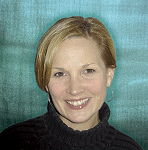 "Providing a culture that supports innovation" isn't just a sloganat Albemarle County Public Schools in Charlottesville,VA. The district's educators are encouraged to pursue newideas and test theories and practices in their classrooms. Oneoutcome of this philosophy is a program in which K-12 teachersand students regularly engage in podcasting projects.
"Providing a culture that supports innovation" isn't just a sloganat Albemarle County Public Schools in Charlottesville,VA. The district's educators are encouraged to pursue newideas and test theories and practices in their classrooms. Oneoutcome of this philosophy is a program in which K-12 teachersand students regularly engage in podcasting projects.
Three Albemarle educators—gifted resource teacher Paula White and Curriculum and Technology Integration Partners Ray Cairnes and Melanie Dusci—founded the iPod Professional Development Group in 2004-2005 to explore various uses for iPods in schools. "We began with an online forum for discussion and brainstorming," says White, "inviting other county educators to join us using an e-mail listserv."
 Five additional teachers signed up, primarily monitoring conversations of the core group. By spring 2005, White, Cairnes, and Dusci were conjuring up and sharing projects that would integrate iPods into curriculum.
Five additional teachers signed up, primarily monitoring conversations of the core group. By spring 2005, White, Cairnes, and Dusci were conjuring up and sharing projects that would integrate iPods into curriculum.
The subsequent school year, the district allocated $2,500 tofurther the group's work. Cairnes' principal used site funds topurchase iPods, as did Dusci's parent/teacher organization.White procured funding through grants from the ShannonFoundation and Best Buy. The group moved from theory to application, Duschisays, developing classroom activities for implementation inearly 2006.
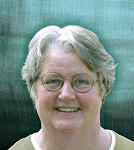 For example, White worked with fourth-grade teachers and students on "Road Project Podcasts." In addition, an existing working relationship between White and the National Gallery of Art led to the group's collaboration with the gallery to develop and deliver a podcasting component for the NGA's summer teacher institute.
For example, White worked with fourth-grade teachers and students on "Road Project Podcasts." In addition, an existing working relationship between White and the National Gallery of Art led to the group's collaboration with the gallery to develop and deliver a podcasting component for the NGA's summer teacher institute.
The group's work impacts a growing range of people. Feedback on school-based projects shows growing parental involvement, higher levels of student engagement, and increased technology use among participating teachers. A fellow teacher now posts daily podcasts for students who want to review material or get caught up after an absence. Dusci's elementary and middle school students regularly complete podcasting projects such as "Journey Through Hallowed Ground," in which they toured Civil War sites from Gettysburg, PA, to Charlottesville, VA, making podcasts about the various stops along the way. And the podcasting work the group is doing for the NGA touches teachers from around the world. (View various podcasts from the students of White, Dusci, and Cairnes here.)